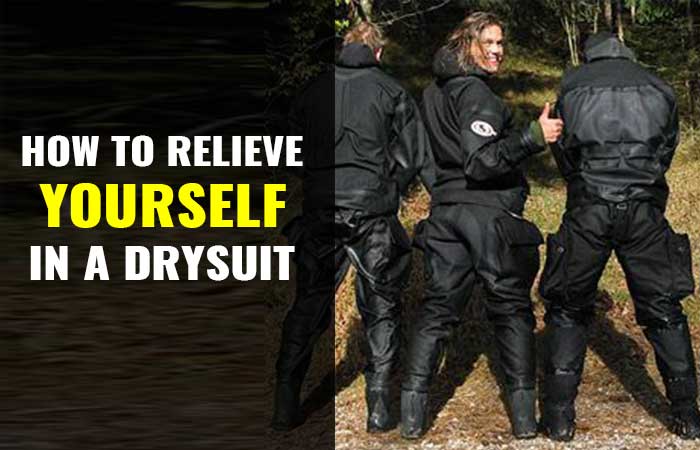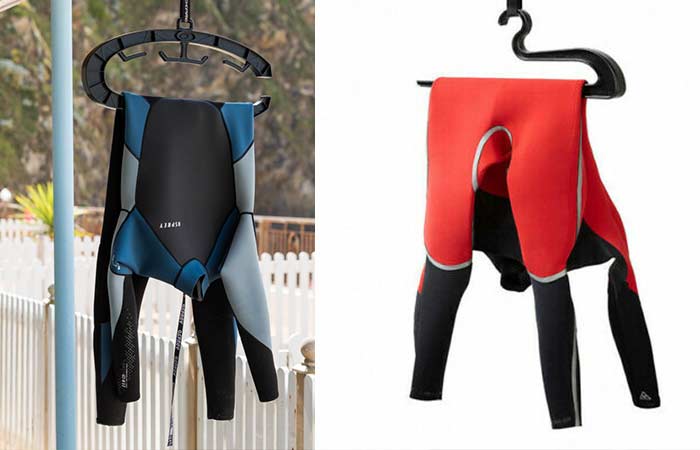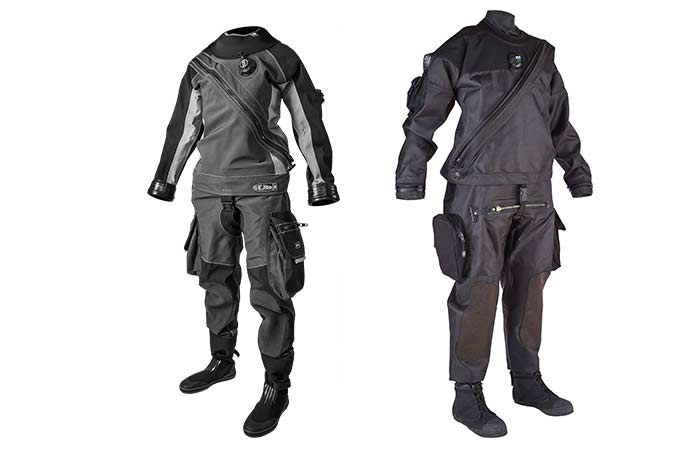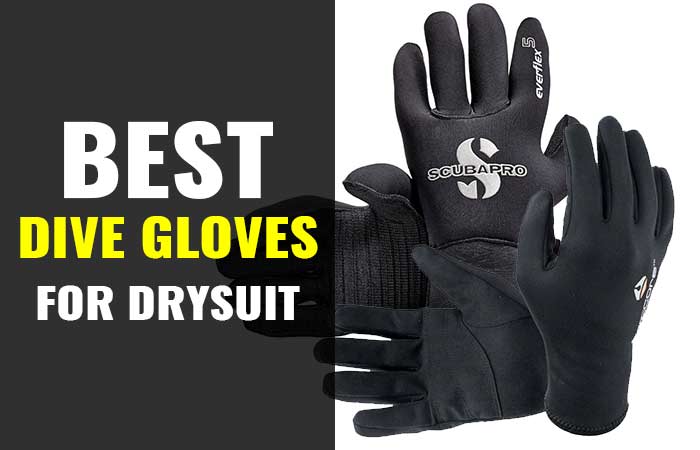Drysuit vs Wetsuit-Differences
When diving, one of the most important pieces of gear is the suit you put on. It gives you warmth, protects you against the sun’s harmful rays and the stings of underwater animals among other benefits. The type of suit you put on determines a lot in terms of how warm you will be and other aspects.
The two main types of diving suits are the wetsuits and drysuits. Choosing between them can be quite difficult given their differences but similar roles. The most obvious difference between them is that the drysuit keeps you dry while the wetsuit doesn’t. However, they both provide underwater protection.
In this guide, we bring out the differences between the two types of suits and decide on which one is the best. The answer to which one is the best is rather subjective as it depends on the situation with aspects such the temperature of the water, type of water activity and others being the determinants.
Wetsuits vs Drysuits: Differences
| Differences | Wetsuit | Drysuit |
| Fit | Skin-tight fit | Loose fit |
| Material used | Closed-cell foam neoprene | Rubber, neoprene, nylon |
| Function | Keeping warm in cold waters | Keeping warm in very cold waters |
| Other clothes | Can use tight undergarments | Can use other cloths easily |
| Ease of use | No training needed | Training needed to balance and use |
| Ease of movement | Easy and quick motions | Suit increases drag reducing on speed |
| Longevity | Lasts about 5 years | Lasts about 15 years |
| Cost | Relatively affordable | Generally expensive |
The main differences between the suits are as follows:
Functionality
Wetsuit
A wetsuit works by using the heat from your body to keep you warm underwater. They work by having a closed-cell foam material such as neoprene or rubber close to the body. When you get wet, the suit allows a layer of water under it. Your body warms this layer of water and the suit keeps it around your body at all times. Without colder water coming in contact with your skin, you remain warm.
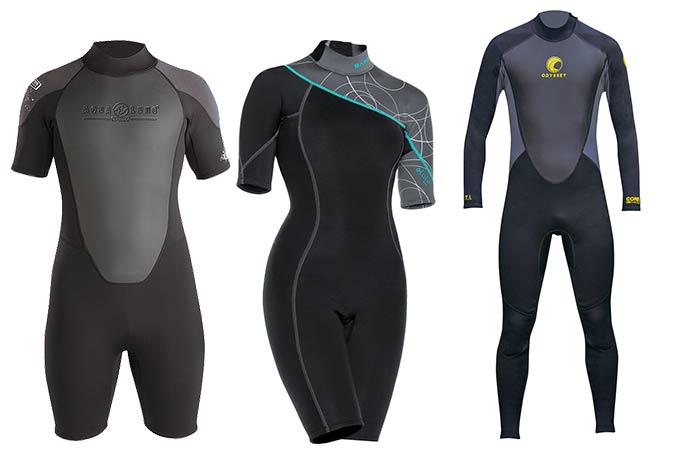
This, however, is only possible when the suit is tightly hugging your body. Otherwise, cold water would come into contact with your skin, get heated then be replaced by more cold water. The result would be that your body will keep losing heat to the water.
The thickness of the wetsuit determines how much heat your body will retain while in the water. Generally, the thicker the wetsuit, the more heat it’ll retain. As such, people generally use thicker wetsuits in colder waters and thinner ones in warmer waters. To keep the tightness intact, you need other tight undergarments to wear with the suit if you need to.
For this reason, the wetsuit can be used both inside and outside of the water. Its minimal appearance and feel makes it the best suit to keep you warm when carrying out shallow water activities such as surfing and other similar activities.
Drysuit
The other type of diving suit is the drysuit. As the name denotes, it keeps you dry even when you’re under water. It achieves this by using impermeable and waterproof materials such as crushed neoprene, foam neoprene, heavy-duty nylon and vulcanized rubber to keep the water away from the body. Other areas of water entry such as the neck, wrists, ankles and others are also sealed off. A waterproof zipper seals the suit up.
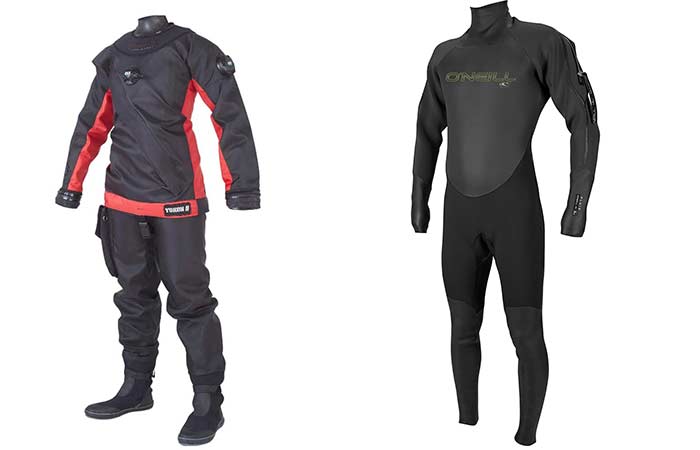
With this design, drysuits are much looser when compared to wetsuits. They keep you warm by trapping a layer of air between your skin and the suit. You can even increase or decrease the amount of air in the suit. This space is also enough to add clothes and other items that can improve the thermal regulation of the suit.
To control the amount of air in the drysuit, you get an inflator valve similar to the power inflator on a buoyancy compensator vest. This valve helps you control how deep you want to go. Also, a drysuit requires some training to properly balance and use it in and on the water.
Mobility
When it comes to movement in and on the water, the wetsuit is a clear winner as it offers very little drag on your body. As they hug the body, wetsuits make the user streamlined and thus easier to move in water.
The drysuit, on the other hand, is baggy and heavier and thus makes the diver considerably slow. While wetsuits can be used for competition such as by triathlons, drysuits are only used for specific purposes such as research underwater.
Longevity
While wetsuits are made of light materials with few complex parts, drysuits are made of a different mix of high-quality materials all of which make them long lasting. The fact also that wetsuits stretch to fit the user while drysuits don’t makes the latter last longer when in use.
On average, wetsuit will work well for about 5 years while a drysuit can be in great condition even 15 years after it was first used. The other reason for this is that a wetsuit is likely to be used more while a drysuit is used sparingly given the types of tasks it can perform.
For these reasons, you can find a drysuit that’s been used before but with a great quality. On the other hand, wetsuits don’t do well when resold especially after it has been used for a while. In this regard, a drysuit will preserve its value far better than a wetsuit will.
The Fit
In terms of the fit of the suits, the wetsuits are best worn tight to enjoy their protective qualities. No matter the type of wetsuit you’ll be getting for yourself, always make sure it gives you a good fitting that’s close to the skin. It should, however, be tight and comfortable at the same time.
On the other hand, drysuits are best worn baggy with lots of space in them. This is so that the suit can provide the needed warmth and protection. It also allows the suit to dictate your buoyancy in the water with ease.
Construction Materials
The wetsuits often use closed-cell foam neoprene and other materials. This makes them breathable, expandable and thus provide the needed tight fit needed to provide warmth. The neoprene used is of a high quality and can thus be used many times over without it breaking apart.
Drysuits utilize nylon, rubber and neoprene but in stronger and more compact forms than those used in wetsuits. These can withstand more pressure and for longer hence the reason a drysuit can stay in good condition for up to 15 years. They don’t stress much since they don’t need to
Ease of Use
With a wetsuit, there’s no learning curve since it doesn’t do much to the user apart from adding them protection and making them streamlined. If you know how to swim, scuba dive, and surf, a wetsuit will only make you better at these activities.
The drysuit, on the other hand, requires some proper learning on how to stay afloat and move in the water with it. This is due to having air around the body that changes the natural buoyancy of the body in a significant way. As such, don’t attempt to use a drysuit without first learning how to use it from trained personnel.
Uses
The uses for each suit are quite different although some are similar to each other. A wetsuit is suited to surfing, riversufing, wakesurfing and diving in warm waters. You can also dive with a wetsuit in cold waters but at a higher level of thickness.
Drysuits are suited to the very cold water or deep sea diving expeditions. Given their cost, complexity and quality, you can take part in deep sea diving, kayaking, paddling and others in very cold waters.
Other Cloths
With the wetsuit being meant to work well when hugging the body, the pieces of cloth you can add on them should be similarly tight in nature. These are mostly undergarments which should hug the body well and thus provide extra warmth and protection to the body. Cloths worn over the suit can be baggy if needed.
The cloths or other gear you wear with a drysuit can either be baggy or tight depending on their purpose. This won’t affect the effectiveness of the suit since it doesn’t depend on the tightness to provide warmth and protection.
Cost
When it comes to buying either of the suits, you’ll spend much more on a drysuit than on a wetsuit. The complexity of the suit, the materials that go into it and other aspects make drysuits much more costly. While quality wetsuits don’t come cheap, they’re relatively cheaper than wetsuits.
These are the main differences between the suits. As can be seen here, they’re both suits for the water but suited to different tasks.
Similarities
Aside from their differences, the two suits have the following similarities:
Uses
Wetsuits and drysuits can be used for some similar roles. Diving, paddle boarding and others can all be done with either suit but under different circumstances.
Materials
The materials used for the suits are all similar save for the type and form they’re in. In both suits, for example, neoprene is highly used but in different forms.
Which is the better suit?
The answer to this question is highly subjective. It all depends on what your task in the water is, the temperature of the water and many other aspects. Otherwise, they serve almost similar purposes.
More on Wetsuits
- How do Wetsuits Work?
- What are Wetsuits Made of? Types & Top Brands
- Wetsuits Colors: Why Black? What is the Best Color?
- How to Properly put on a Wetsuit, Remove+ Dos & Don’ts
- What to Wear Under Wetsuit: Female, Men & Triathlons Undergarments
- How Tight/Fitting should a Wetsuit be?
- Wetsuit Thickness Guide + Temperature Chart
- How to Wash a Wetsuit + Best Cleaners, Shampoo & Soap
- How to Dry a Wetsuit + Best Drying Hangers & Racks
- Wetsuit Storage and Care Tips
Best Wetsuits
- Best Hypoallergenic Wetsuits for Neoprene Allergy
- Best Hooded Wetsuits for Women & Men
- Best Warmest Wetsuits for Cold Water Swimming
- Best Plus Size Wetsuits for Big People
Drysuits


